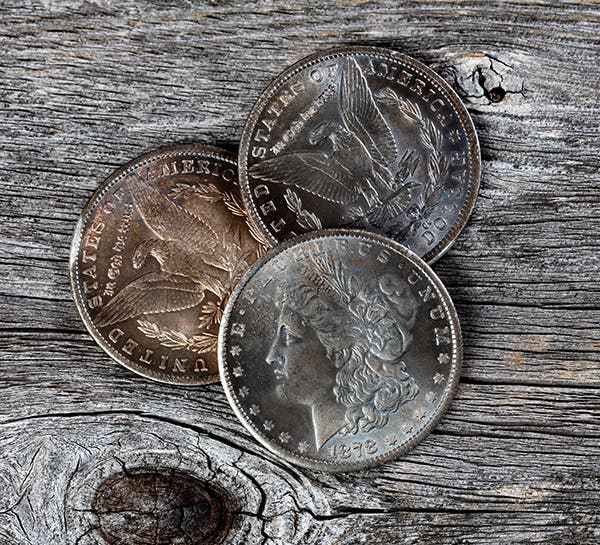1893-CC last of Carson City dollars
Even before 1893, there were clear signs that the Carson City Mint was not working out. Morgan dollars had been produced there through 1885 and then production stopped only to…
Even before 1893, there were clear signs that the Carson City Mint was not working out. Morgan dollars had been produced there through 1885 and then production stopped only to resume again in 1889 before coming to an end in 1893. Coinage operations at Carson City ended in 1893, although the facility continued to do assay and refining work for some time. While the facility continued, the 1893-CC has a unique place in history as the final Carson City Morgan dollar.
The 1893-CC was interesting in that it did something that was unique for a Morgan dollar from Carson City and that is it had the largest mintage of the Morgan dollars produced that year at 677,000 pieces. No other facility even reached 400,000 in 1893.
The 1893-CC had been minted in the first half of the year as the last mintage was in May. The 1893-CC at that time, probably in large numbers, became part of the dollar coin inventory at Carson City, which in 1899, still totaled over 5 million pieces.
By 1900, the coins had been shipped either to the Treasury in Washington, D.C. or to the San Francisco Mint. It is at least possible that large numbers were destroyed in the melting that was authorized in the Pittman Act in 1918. It is certainly likely as well that individual coins or perhaps even bags were paid out over the years for one reason or another.
In his excellent book, “The Official Red Book of Morgan Silver Dollars,” Q. David Bowers reports that dealer Harry Forman handled 10 bags of the 1893-CC toward the end of the 1950s and that the Redfield Hoard also had a few thousand pieces that were “scraped by a counting machine used to inventory the pieces.”
Probably the most interesting thing is that there was not a single bag of the 1893-CC in the General Services Administration sales of the Treasury hoard. There was just one coin. Yet many other CC dollars in the hoard had nearly all or more than half of their entire mintage in the GSA holdings. That suggests that, unlike other Carson City Morgan dollars, the 1893-CC had disappeared.
Without that special additional supply from the GSA sales, the 1893-CC is very much a Carson City date that is about as tough as would be expected under normal circumstances. We see that in MS-60.The 1893-CC is priced at $5,750 while in MS-65 it is $70,000 and a deep-mirror prooflike at $90,000.
There are problems in upper grades as the 1893-CC has a reputation not unlike the 1895-S of being heavily bagmarked. That causes very real problems acquiring a nice example. As Bowers observed in the case of the 1893-CC, “a piece MS-63 or finer, with minimum bagmarks is a numismatic find and very special.”
The 1893-CC is also known as a poorly struck date. It may not be as bad as in some notorious cases, but the strikes are usually average at best with the breast and wings of the eagle on the reverse being light.
In lower grades, the 1893-CC is available, though $255 in VG-8 means it is not cheap, but it is certainly a worthwhile date as it has a place in numismatic history as the last Carson City Morgan dollar. That makes it worth owning.
More Coin Collecting Resources:
• Strike it rich with this U.S. coins value pack.
• Build an impressive collection with Coin Collecting 101.








